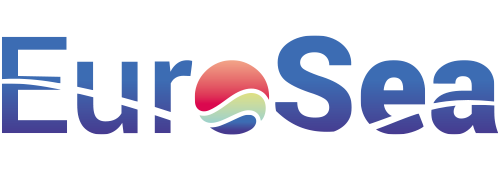
Connecting environmental and fish recruitment data improves stock forecasts and fisheries advice. (Credit: M. Rincón Hidalgo)
Margarita Rincón Hidalgo, senior scientist at the Spanish Institute of Oceanography (IEO), based at the Oceanographic Centre in Cádiz, is carrying out the fish stock assessment modelling in EuroSea Work Package 6 ‘Ocean Health’, in which the Copernicus Marine Environment Monitoring Service and fishery communities are connected to increase uptake and inform development of products for fishery management. Margarita is also a national member of the ICES working group WGHANSA (Working Group on Southern Horse Mackerel, Anchovy, and Sardine), that is in charge of assessing the status of several populations of small pelagic fishes inhabiting the south-western European waters.
The European anchovy is a species of interest with regard to stock assessment, which is critically needed to guarantee sustainable management of these short-living, low trophic level, high biomass fish species. Copernicus products can be useful in this context, as they provide insight into environmental drivers on estimated recruitment time series. Environmental influence can thus be used in a Globally applicable Area-Disaggregated General Ecosystem Toolbox model (GADGET), to provide forecasts and improve advice by estimating recruitment and exploring relationships between recruitment and environmental variables. This was tested for the European anchovy and wind in the Gulf of Cádiz, Spain, prior to the EuroSea project (Rincón et al. 2019).
GADGET has been developed to model complicated statistical marine ecosystems within a fisheries management and biological context, and can take many features of the ecosystem into account. It allows the user to include, for example, one or more species, multiple areas with migration between areas, predation between and within species, growth, reproduction and recruitment, and multiple commercial and survey fleets taking catches from the populations. The priority is now to implement, or improve, the already developed GADGET models. This is the main long-term approach and will be used to estimate recruitment and explore relationships between recruitment and environmental variables.
On her YouTube channel Margarita provides tutorials about the GADGET model and fish stock assessment, in Spanish and English. Gabriel Navarro and Martha Dunbar (CSIC) can provide further details on this work in EuroSea WP6.
